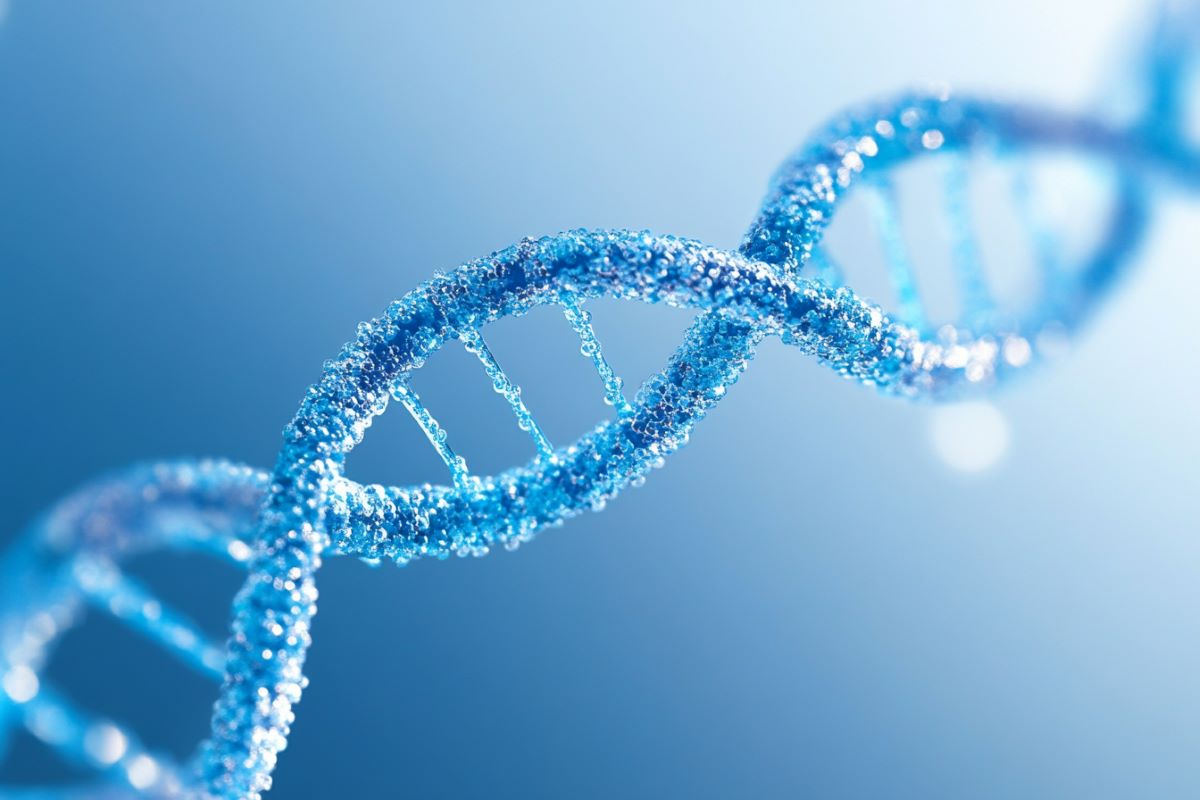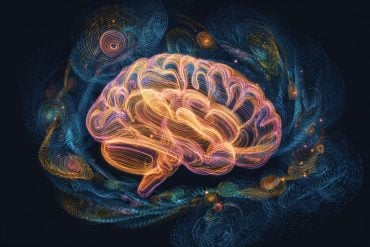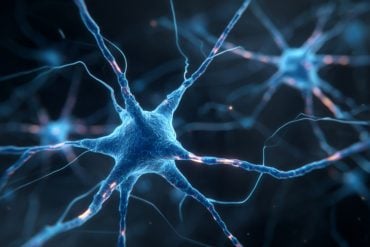Summary: The gene neuropilin2 regulates inhibitory neuron migration and excitatory neuron connections, essential for balanced brain activity. A study revealed that deleting neuropilin2 disrupts inhibitory circuits, leading to autism-like behaviors and a higher seizure risk.
Researchers demonstrated how disruptions in inhibitory neuron migration create imbalances that link autism spectrum disorder (ASD) and epilepsy. These findings open pathways for developing targeted treatments to address these co-occurring conditions.
Key Facts
- Neuropilin2’s Role: This gene regulates inhibitory neuron migration and synaptic balance, affecting autism and epilepsy risk.
- Circuit Imbalance: Deleting neuropilin2 disrupts inhibitory circuits, leading to co-occurring autism-like behaviors and seizures.
- Therapeutic Potential: Targeting early neuronal development phases could prevent or mitigate these conditions.
Source: UCR
The gene neuropilin2 encodes a receptor involved in cell-cell interactions in the brain and plays a key role in regulating the development of neural circuits.
Neuropilin2 controls migration of inhibitory neurons as well as the formation and maintenance of synaptic connections in excitatory neurons — two crucial components of brain activity.

A study led by neuroscientist Viji Santhakumar at the University of California, Riverside, and collaborators at Rutgers University in Newark, New Jersey, now offers insights into how this gene contributes to the development of behavioral changes associated with autism spectrum disorder and epilepsy.
The study, published in Nature Molecular Psychiatry, offers a pathway for future treatments aimed at alleviating some challenging symptoms of these frequently co-occurring conditions.
Previous research has linked mutations in neuropilin2 to neurological disorders like autism and epilepsy, but the mechanisms involved have remained largely unclear.
In the current study, Santhakumar and her collaborators created an “inhibitory neuron selective knockout” mouse model to examine the consequences of deleting the neuropilin2 gene.
They found the absence of neuropilin2 impairs the migration of inhibitory neurons, disrupting the delicate balance between excitatory and inhibitory signals in the brain.
“This imbalance leads to autism-like behaviors and an increased risk of seizures,” said Santhakumar, lead investigator of the study and a professor of molecular, cell and systems biology.
“Our study results highlight how a single gene can influence both the excitatory and inhibitory systems in the brain. We show that disrupting inhibitory circuit development is sufficient to cause autism-related behaviors and epilepsy to co-occur.
“By better understanding how neuropilin2 works in the formation of the brain’s circuitry, we may be able to develop more targeted therapies for different features of these disorders.”
A unique aspect of the research is the focus on the migration of inhibitory neurons, a process in which neuropilin2 plays a crucial role. By selectively deleting neuropilin2 during a key developmental window, the researchers found impairments in inhibitory regulation of the circuit, which led to deficits in behavioral flexibility, social interactions, and an increased risk for seizures.
The study findings suggest that targeting specific phases of neuronal development could open new doors for therapeutic interventions, potentially preventing the onset of these disorders if detected early.
“By isolating the role of inhibitory circuit formation, we may be able to develop therapeutic strategies that could improve outcomes for individuals with autism, particularly those who experience seizures,” Santhakumar said.
Santhakumar came to UCR in 2018 from Rutgers University to expand her research vision of developing a multi-level understanding of brain circuit function in health and disease and uncover the biological processes contributing to developmental brain disorders.
The current collaborative study employed cutting-edge techniques in both behavioral and physiological assessments. The team’s research was funded by the Rutgers Brain Health Institute and the New Jersey Council for Autism Spectrum Disorders.
“This study is a step forward in understanding the genetic and circuit underpinnings of autism and epilepsy,” Santhakumar said.
“It is crucial we continue to explore the precise mechanisms that govern circuit development and maintenance because this knowledge could ultimately help us develop new interventions for a range of developmental disorders, from autism to attention-deficit/hyperactivity disorder and schizophrenia.”
Santhakumar was joined in the study by Deepak Subramanian, Andrew Huang, and Samiksha Komatireddy of UCR; and Carol Eisenberg, Jiyeon Baek, Haniya Naveed, Michael W. Shiflett, and Tracy S. Tran of Rutgers University. Subramanian and Eisenberg contributed equally to the research.
The title of the paper is “Dysregulation of neuropilin-2 expression in inhibitory neurons impairs hippocampal circuit development and enhances risk for autism-related behaviors and seizures.”
About this genetics and autism research news
Author: Iqbal Pittalwala
Source: UCR
Contact: Iqbal Pittalwala – UCR
Image: The image is credited to Neuroscience News
Original Research: Open access.
“Dysregulation of neuropilin-2 expression in inhibitory neurons impairs hippocampal circuit development and enhances risk for autism-related behaviors and seizures” by Viji Santhakumar et al. Molecular Psychiatry
Abstract
Dysregulation of neuropilin-2 expression in inhibitory neurons impairs hippocampal circuit development and enhances risk for autism-related behaviors and seizures
Dysregulation of development, migration, and function of interneurons, collectively termed interneuronopathies, have been proposed as a shared mechanism for autism spectrum disorders (ASDs) and childhood epilepsy.
Neuropilin-2 (Nrp2), a candidate ASD gene, is a critical regulator of interneuron migration from the median ganglionic eminence (MGE) to the pallium, including the hippocampus.
While clinical studies have identified Nrp2 polymorphisms in patients with ASD, whether selective dysregulation of Nrp2-dependent interneuron migration contributes to pathogenesis of ASD and enhances the risk for seizures has not been evaluated.
We tested the hypothesis that the lack of Nrp2 in MGE-derived interneuron precursors disrupts the excitation/inhibition balance in hippocampal circuits, thus predisposing the network to seizures and behavioral patterns associated with ASD.
Embryonic deletion of Nrp2 during the developmental period for migration of MGE derived interneuron precursors (iCKO) significantly reduced parvalbumin, neuropeptide Y, and somatostatin positive neurons in the hippocampal CA1.
Consequently, when compared to controls, the frequency of inhibitory synaptic currents in CA1 pyramidal cells was reduced while frequency of excitatory synaptic currents was increased in iCKO mice.
Although passive and active membrane properties of CA1 pyramidal cells were unchanged, iCKO mice showed enhanced susceptibility to chemically evoked seizures.
Moreover, iCKO mice exhibited selective behavioral deficits in both preference for social novelty and goal-directed learning, which are consistent with ASD-like phenotype.
Together, our findings show that disruption of developmental Nrp2 regulation of interneuron circuit establishment, produces ASD-like behaviors and enhanced risk for epilepsy.
These results support the developmental interneuronopathy hypothesis of ASD epilepsy comorbidity.






